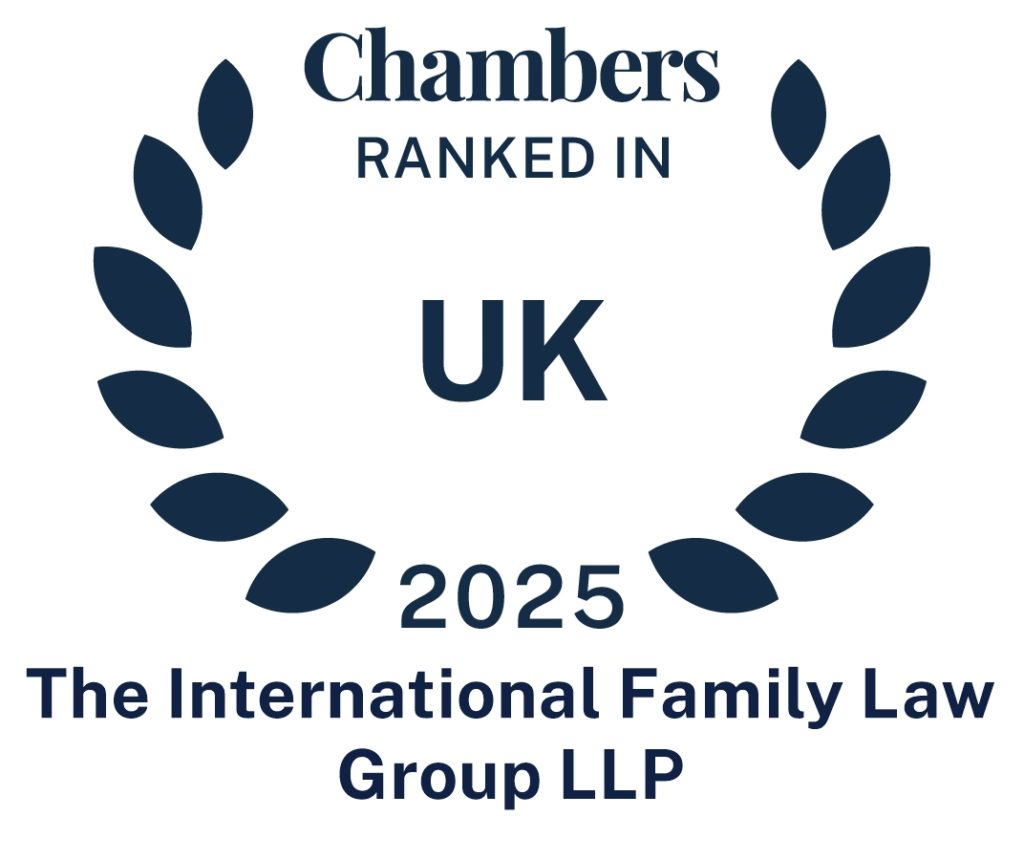The Child Maintenance Service (CMS) has provided a mechanism for calculating the amount of maintenance payable for children since 2012. Its predecessor, the Child Support Agency, was launched in 1993. Having a method for calculating child maintenance is therefore not a new phenomenon. However, the mechanisms, whilst effective, do have limitations. By way of example, if one of the parents lives outside of the UK then the CMS will not have jurisdiction. Secondly, if the paying parent’s gross weekly exigible income is in excess of £3,000 then, having received a ‘maximum assessment’ by the CMS, the receiving parent can apply to the Court for the figure to be topped up.
The calculation according to the CMS
If the exigible annual income is £156,000 or less than the formula enshrined within the statue should be used (subject to the appropriate reduction for shared care):
- For a gross weekly income of less than £7.00; there will be no child maintenance payable
- For a gross weekly income of between £7.00 and £100.00 (or if the paying parent receives benefits, there will be a flat rate of child maintenance payable of £7.00)
- If the gross weekly income is £100.01 to £199.99 then there is a reduced rate, which consists of a flat rate of £7.00 for the first £100.00 of income and the remainder between £100.01 to £200.00 as to 17% for one child: 25% for 2 and 31% for 3 or more
- If the paying parent’s gross weekly income falls between £200.00 to £800.00 then the basic rate will apply at 12% of income for 1 child: 16% for 2 and 19% for 3 or more
- Finally, for a gross weekly income of between £800.01 and £3,000, the first £800.00 is taken into account using the Basic rate and the remainder from £800.01 onwards is at 9% for 1 child: 12% for 2 and 15% for 3 or more children
Whilst the formula assists up to £3,000, if the exigible annual income is in excess of £3,000 per week (£156,000 per annum), then we need to look elsewhere.
The starting point for gross weekly incomes over £3,000
For the last twenty years, family lawyers have largely been following the guidance put forward by Sir Nicholas Mostyn QC (as he then was) in GR v RW [2003] EWHC 611, which suggested that a useful starting point (where the Court has jurisdiction) to assess the quantum of child maintenance is to use the figure given by the statutory formula, in circumstances where the paying parent’s gross annual income is between £156,000 and £650,000. However, in more recent times, there have been some concerns raised with the formula. In particular, that it does not accurately and proportionately reflect the sums required to raise multiple children. Whilst the formula makes some adjustments for more than one child, its primary driver is the percentage of the paying parent’s adjusted gross income. This can result in a reflection of substantially higher maintenance paid for one child than what would be paid per child for multiple child families. A second criticism is that the amounts that are generated by the formula when it is used for incomes up to £650,000 are substantially higher than those that would be typically made by the Court in ‘conventional’ cases. The latter of these criticisms was raised by Mr. Justice Mostyn in the recent case of James v Seymour [2023] EWHC 844. He suggests that, whilst there is a ‘beauty’ (as per Moor J in CMX v EJX (French Marriage Contract) [2022]) of having a formula-based starting point to undergo such a calculation, an extension of the CMS calculator is not the answer. He suggests that the formula is adjusted when the paying parent’s income is between £150,001 and £650,000.
Extremely helpful for all family lawyers out there, Mr. Justice Mostyn has gone so far as to calculate the Adjusted Formula Methodology (AFM) he proposes is used to provide us with the Child Support Starting Point. In his judgment in James v Seymour, he sets out the steps to take when looking into the calculations. The steps are as follows:
Step One: Calculate the paying parent’s gross earned income as disclosed in the most recent P60 or tax return.
Step Two: Once that figure has been ascertained, reduce it by the number of other children living in his/her household (if there is one then reduce it by 11%; if two then it is a reduction of 14% and if three or more it is 16%).
From this figure, annualize and deduct the paying parent’s relievable pension contributions currently being made.
Subsequently, the grossed-up school fees currently being paid should be subtracted from this figure. The grossing-up is done by taking the figure paid for the school fees and dividing it by 0.55. Mr. Justice Mostyn considered this step to be important as it would not be reasonable nor fair for the formula to be applied without such a deduction when these funds are, after tax, spent on the children’s school fees.
Once these three calculations have been completed then the paying parent’s ‘Exigible Income’ is ascertained.
Step Three: If the paying parent’s exigible income is £156,000 or less, then the CMS formula as set out above should be used.
Step Four: For exigible income in excess of £156,0000, the AFM is then calculated by applying a tariff of 2.4% for a single child and 3% for each of two or three children.
Step Five: If the exigible income is between £156,001 and £650,000 and there is no shared care then adjustments should be made. If there is a 1/7th, 2/7ths, 3/7ths, or equal shared care then an adjustment will be made accordingly.
Whilst on paper this seems to be a complicated approach, thankfully, Mr. Justice Mostyn has appended a table of formulas to his judgment. Once the paying parent’s exigible income has been ascertained then it can simply be applied to the tables, which can be found here.
Examples
- A father has an annual income of £157,000 and pays £20,000 in school fees for children. There is no shared care. In order to calculate the child maintenance payable, we subtract the school fees (£20,000 divided by 0.55) to work out his exigible income, making £120,636. From this figure, we can ascertain that his gross weekly income is £2,131.57. We use the CMS formula, taking the first £800.00 at the basic rate of 16% for two children (£128.00) and the remaining £1,513.57 at the basic plus rate of 12% (£181.62). Adding these two together results in a weekly child maintenance liability of £309.62, £154.81 per child, or £8,050 per annum per child.
- By contrast, a father with an annual income of £156,000 per annum paying £20,000 in school fees will follow a different calculation. Here, the school fees will be taken into account and the maintenance liability will be £10,200 per child. Despite very similar incomes, there is a £2,150 difference in the father’s respective maintenance obligations.
- A paying parent has a gross annual income of £300,000 and pays £40,000 in school fees for three children. The school fees are subtracted (£72,727) to calculate the exigible income (£227,273). The first £156,000 is calculated by the CMS at £8,400 per child. The remaining £71,273 provides a further £2,138.19 payable for each child, making the total child maintenance liability of £10,538.19 per child or £31,614.57 in total.
Anomalies
There are, of course, exceptions to following the AFM. If there are four or more children for which child maintenance is paid, the formula should not be used. The same applies for when the exigible income is more than £650,000; the paying parent’s income is largely unearned; the paying parent lives off capital or the application is for a variation of a child maintenance order. In such circumstances then both formulas should be discarded and instead the statutory principles used.
Conclusion
James v Seymour has provided us with helpful guidance on how to navigate child maintenance payments when the CMS does not have jurisdiction due to the paying parent’s higher income. It should also be borne in mind that, as Mr. Justice Mostyn reiterates, the AFM is a “loose starting point”; it can be departed from without fear of appellate review. As was determined in this case, the Judge at the first instance’s decision “to have no regard to the formula result lay within her unfettered discretion”.
Whilst the relative recency of the judgement (19 April 2023) means we are not yet able to see the full impact of the formula, there have still been some recent signs of the weight it may carry. In the case of De Renée v Galbraith-Marten [2023] EWFC 141 only last month, Mr. Justice Cobb set aside a recently made child maintenance order on the basis it was predicated on the old formula and it was ordered that the father pay periodical payments in accordance with the AFM. Albeit this was on an interim basis and the cases are fact-specific, one must wonder whether this could open the floodgates. Time will tell; but in any event, having clear, reasoned, step-by-step guidance in areas such as this is undoubtedly useful.
Georgie Huse
[email protected]
The International Family Law Group LLP
www.iflg.uk.com
© September 2023
- Georgina Husehttps://iflg.uk.com/team/georgina-huse
- Georgina Husehttps://iflg.uk.com/team/georgina-huse
- Georgina Husehttps://iflg.uk.com/team/georgina-huse
- Georgina Husehttps://iflg.uk.com/team/georgina-huse











